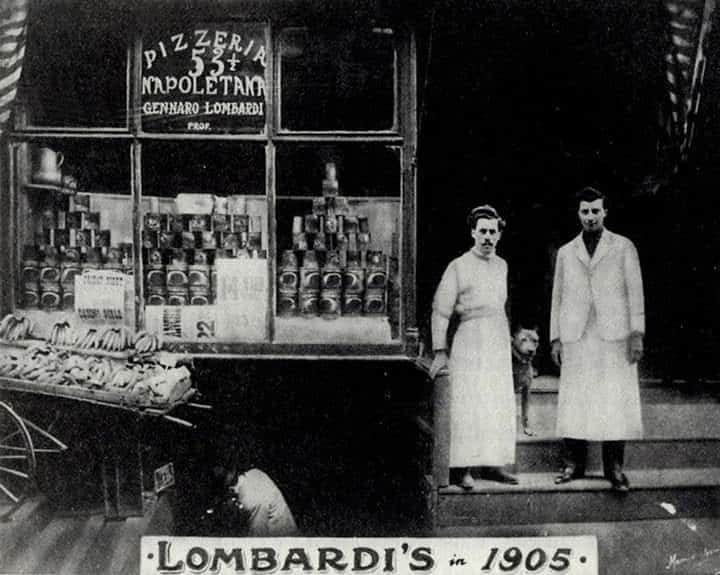You think it might be just a regional thing, like how certain people from Wisconsin say “pop” when they mean soda and others don’t. But then, you start to think,maybe there’s more to it than that.
So is pizza a pie? Pizza is technically a pie, especially in America. A pie is a dish where the main ingredient is placed in the base, usually covered by pastry. A pizza has ingredients like tomatoes, cheese, and meat that’s overlaid with dough and baked which makes it a pie.

I started asking myself this very question, as it seemed like something no one has nailed down exactly. As it turns out, there’s some fun trivia for history buffs when it comes to what we call pizzas.
After all, there’s still debate about just what the hell a tomato is for some reason. Some people will even say a pizza is a sandwich.
In this post, I’ll take you through some of it.
Is Pizza a Pie?
It’s always fun tracking down ancient newspaper stories and seeing examples of the way language was once used. I once saw an ad in an old paper that explained there was a new craze I should invest in: There’s “Money in Toy Bears!” A toy bear, it seems, was the first thing we thought to call hamsters.
Pizza Pie has a similar amusing origin, full of stuffy, newspaperman language that makes the writer sound somewhat uncultured. Of course, we’re familiar with pizza now. When it first came to America, in New York, journalists were at a loss for descriptors.
“The Italian,” wrote a New York Tribune writer in the December 6, 1903 edition of the paper, “has invented a new kind of pie.” He was listing it amongst several other, more traditional pies. He goes on to explain that pies were once thought of as a “Yankee dish”.
But the pomodoro pizza pie came from Italy. Pomodoro is Italian for “tomato”, hence “tomato pie”. Which brought most of America to shorten it to pizza pie. And I’m sure you can see where this led.
The Father of the Pizza Pie

Gennaro Lombardi was an Italian American immigrant who, like most, dreamed of bigger things when he first arrived in the country in 1897. He opened up a small grocery store in Little Italy in New York City, where he’d serve tomato pie at a lunch counter to customers.
Something started to dawn on Lombardi. The pizzas were the best-selling thing in the store. Soon after, he opened what’s considered the first American pizzeria, Lombardi’s, in 1905.
Fascinatingly, he instantly had to change the recipe before opening, fearing Americans wouldn’t be accustomed to the pizzas he was familiar with in his home in Naples. Ironically, we now seek out this kind of Neapolitan pizza.
But at the time, we were used to coal-powered ovens and mozzarella from cow’s milk, not buffalo. So he changed from wood-powered and buffalo milk to Americanize pizza. Of course, it still had the classic combination of dough and sauce, so it was certainly a pizza.
There’s currently some dispute over whether Lombardi was the actual creator of the American pizza pie, but it’s not as controversial as you think. Apparently, he was underage at the time, only 17, so a man named Fillipo Milone may have opened Lombardi’s.
Nonetheless, Lombardi’s still sits proudly as one of the cornerstones of New York City at 32 Spring Street.
But Is A Pizza Really a Pie?
To be completely honest, there are both yes and no answers to whether or not a pizza is a pie. In America, yes, we initially called it a pie. I say we should stand by such traditions.
In Italy, though, the word “pizza” is only used to describe different types of pizzas, no other types of pies.
Though, in fairness, no one in America would ever mistake an apple pie for a type of pizza, so it’s a double-edged, dual-tipped sword that I could dance around endlessly without providing a concrete answer.
But What IS The Answer?
I can tell you this much: when in Italy, you likely want to abstain from saying “pizza pie”. Using the term “pie” for pizza is a Chicago/New York term, and using it in other countries may result in mistaken restaurant orders.
“Pizza” does not translate into “pie” in Italian, but it’s up to you if you want to still refer to pizza as pie in your own country. The other issue I can see with the term is that it feels dated, but whether or not this is the case is entirely up to regional differences and dialects.